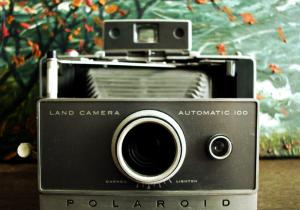Looking for design inspiration? Browse our curated collections!
August 24th, 2014 - 03:06 PM

Why Taking Great Photos of your Artwork Matters...
We’re going to let you in on a little secret. Whenever you apply for a competition of any kind – be it an art competition, a university scholarship, a job opportunity – really, ANY competition at all, the jury panel or committee assigned the task of selecting the best candidates will begin the process of elimination by weeding out submissions that failed to meet the criteria outlined on the application form in favor of applicants who took the time to do it right. This may sound harsh, but really it isn’t. It boils down to this: if you don't take the application process seriously, why should we take your application seriously? Professionalism is key...
In an art competition, the most important element of your submission is the quality of the images of your art work. These images are what we use to judge your work.
If you ever expect your art career to go anywhere at all, it is imperative that you present your work in a professional manner. Art is VISUAL. If the photos of your artwork are bad, you are sunk. Plain and simple.
That’s why we’ve put together this easy 10 step guide to help you produce great quality images of your artwork.
1. Do not use your cell phone camera to photograph your work. Buy or borrow a proper digital camera that has a few basic settings, like being able to select the ISO. Lower ISO settings produce crisper, cleaner images, higher ISO settings produce grainier ones. The ideal setting is 200 ISO. Never go above 400 ISO. The trade off for a lower ISO setting is that it will require a longer exposure time. This means…
2. You will need a tripod. Because you will be shooting your photos using longer exposures, it is a given that if you go at it hand held, the pictures will be blurry. Small hand movements will definitely register as motion blur. Using a tripod is also essential for a few other reasons…
3. A tripod allows you to make sure that your camera is perfectly aligned to the artwork. It is important to photograph art head on in such a way that the edges of the art line up with the edges of the photo. If you are leaning the art against a wall or easel, you must take that slight angle into consideration. A tripod makes this easy. Simply tilt the tripod head so that the camera lens is parallel to the art work. An easy way to do this right is to make sure the edges of your art work run parallel to the edges of the photo. You should aim to minimalize any edge distortion as much as possible. Last point on the tripod front: by mounting your camera on a tripod and using the delayed timer feature that most cameras have, you will ensure that there is zero camera movement when the shutter goes off. Provided your focus is right, using the tripod and the delayed timer will produce the sharpest image possible.
Comments
There are no comments on this blog. Click here to post the first comment.